
René Girard and Creative Reconciliation
edited by Vern Neufeld Redekop and Thomas Ryba
The contribution of this book to the field of reconciliation is both theoretical and practical, recognizing that good theory guides effective practice and practice is the ground for compelling theory.
Read more
Using a Girardian hermeneutic as a starting point, a new conceptual Gestalt emerges in these essays, one not fully integrated in a formal way but showing a clear understanding of some of the challenges and possibilities for dealing with the deep divisions, enmity, hatred, and other effects of violence. By situating discourse about reconciliation within the context of Girardian thought, it becomes clear that—like Peter who vowed he would never deny Jesus but ended up doing it three times—any of us is susceptible to the siren call of angry resentment and retaliation. It is with a profound awareness of the power of violence that the emergence of mimetic discourse around reconciliation takes on particular urgency.
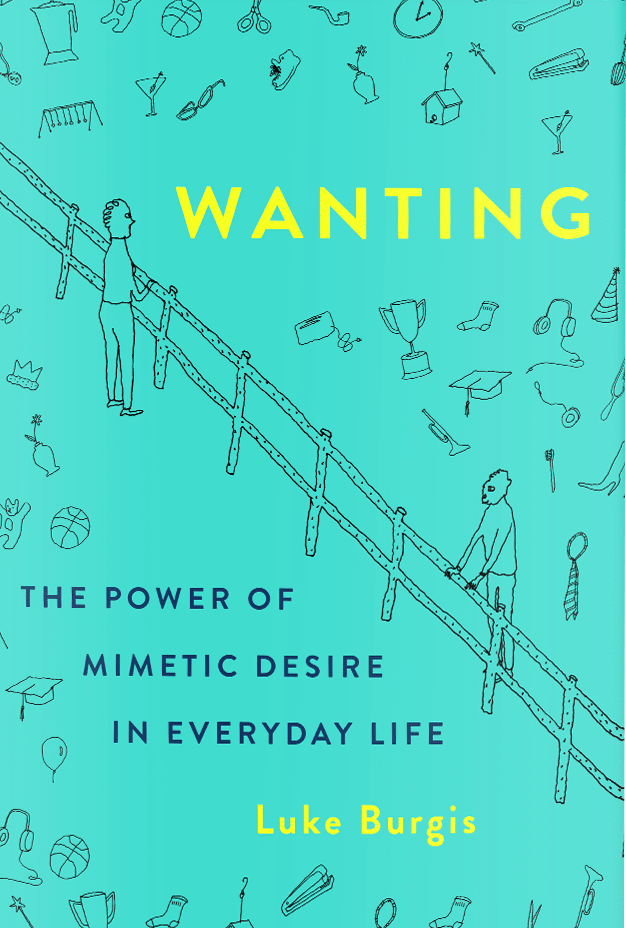
Wanting: The Power of Mimetic Desire in Everyday Life
edited by Luke Burgis
WANTING is a large-scale exposition of mimetic theory and its practical applications, especially the positive potential of mimesis, written by entrepreneur, author, and professor of business Luke Burgis. This book is the most ambitious and engaging explanation of mimetic theory for someone new to Girard’s thought.
Read more
The book has a wide, sweeping range, moving from an interview with Paypal co-founder Peter Thiel in the introduction to recounting the story of Zappos.com and the rivalry between Ferruccio Lamborghini and Enzo Ferrari to a three-Michelin-star chef Sebastien Bras, who renounced his stars and told the Michelin Guide not to come back to his restaurant or include him in the guide.
The book is totally unsummarizable since it covers such broad ground and weaves together narrative with more academic explanations of mimetic theory.
The first half of this book covers mimetic desire, distortions of desire (and objects), rivalries, conflict, and the scapegoating mechanism; the second part of the book deals with the transformation of desire. The second half of the book focuses on one can be anti-mimetic, or counteract and resist the forces of negative or destructive mimetic desire and thereby live a more fulfilling life.
Learn more about Wanting.
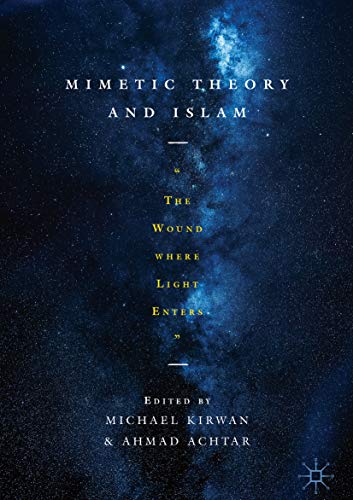
Mimetic Theory and Islam: “The Wound Where Light Enters”
edited by Michael Kirwan & Ahmad Achtar
This volume explores mimetic theory and its shared ground between Judaism, Christianity, and Islam—the Abrahamic religions—which seems to have a spiritual and ethical breakthrough: a move away from scapegoating rituals and toward a concern for innocent victims. This is a move away from negative cycles of desire that lead to violence and toward positive cycles of desire that lead to communion.
Read more
The table of contents of the book is as follows:
Part I: THE ARGUMENT
1:The Wound Where Light Enters: Mimetic Theory and Islam
Michael Kirwan and Ahmad Achtar
Part II: TEXTS
2: Islamic Anthropology, based on Key Passages in the Qur’an
Zekiriga Sejdini
3: Adam and Eve in the Qur’an: A Mimetic Perspective
Ahmad Achtar
4: The Becoming of a Model: Conflictive Relations and the Shaping of the Quranic Ibrahim
Michaela Quast-Neulinger
5: Fathers and Sons, Sacrifice and Substitution: Mimetic Theory and Islam in Genesis 22 and Sura 37
Sandor Goodhart
6: From Structure to Interpretation of the Joseph Sura
Michel Cuypers
PART III: TRADITIONS
7: Spiritual Love and Sacred Suffering: Mimetic Theory from the Shi’ah Perspective
Habibollah Babaei
8: The Philosophy of Dialogic Engagement: Two Muslim Dialogue Thinkers vis-a-vis Mimetic Theory
Oemer Sener
PART IV: CHRISTIANITY AND ISLAM IN RESENTFUL MODERNITY
9: Islam and Islamism in the Mirror of Girard’s Mimetic Theory
Thomas Scheffler
10: Prison Violence in France and Mimetic Theory
Yaniss Warrach
11: Muslim Brotherhood, Social Justice and Resentment
Wilhelm Guggenberger
12: Vox victima, vox moderna? Modernity and Its Discontents
Michael Kirwan
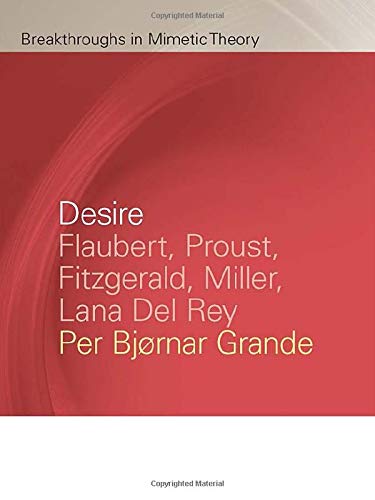
Desire: Flaubert, Proust, Fitzgerald, Miller, Lana Del Rey
edited by Per Bjørnar Grande
“A common theme in films, novels, or plays is how desire works in characters and how it creates and changes their destinies.” So begins this work by Norweigen professor and Girard scholar Per Bjørnar Grande in this Breakthroughs in Mimetic Theory series by Michigan State University Press, a series supported by Imitatio, a project of the Thiel Foundation.
Read more
This book is comprised of 5 chapters:
Chapter 1: The Nature of Desire
Chapter 2: Desire in Madame Bovary
Chapter 3: Proustian Desire
Chapter 4: Desire in The Great Gatsby
Chapter 5: Desire in Death of a Salesman
Chapter 6: Desire in Lana Del Rey
A highlight of this work is Chapter 4 on The Great Gatbsy, in which Grande frames F. Scott Fitzgerald in terms of his tortured mimetic relationship with his own characters, and how The Great Gatsby is actually a step forward for Fitzgerland in removing himself from the story. “Fitzgerald writes from a distance that enables him to discover a more refined literary structure,” notes Grande. “There is no longer any authorial voice or narrator with full access to the characters.”
He continues:
“In his previous novels, This Side of Paradise (1920) and The Beautiful and Damned (1922), Fitzgerald was playing out his own life, letting his protagonists wrestle with his own conflicting ideas regarding such philosophical perspectives as Nietzscheanism, naturalism, Romanticism, and Catholicism. The omniscient narrators in these novels are therefore constantly shifting perspectives in order to explore the author’s ideological frustrations. In contrast, the story told in The Great Gatsby is narrated by a character with limited access to the other characters.”
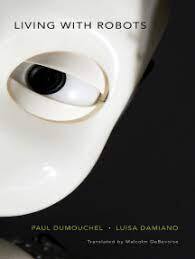
Living with Robots
edited by Paul Dumouchel and Luisa Damiano
Living with Robots is a fascinating exploration of artificial intelligence that draws on mimetic theory to understand the phenomenon of social robots that exist in the real world, with real bodies, and interact with humans. The book is deeply philosophical and contemplates the possibility that we are at an inflection point in human evolution due to the ability of robots to have what the authors refer to as “artificial empathy.”
Read more
What are the rules governing social behavior? Human desire, according to Girard, is one of the most powerful forces guiding human behavior. If that is true, then designers of AI cannot ignore the impact of mimetic desire and the role that it plays in making us uniquely human—and mimetic.
This book is particularly concerned with the “moral behavior” and ethical concerns of robots, and explores the possibility of robots having agency. This is a fundamental text for any exploration of the relationship between mimetic desire and freedom.
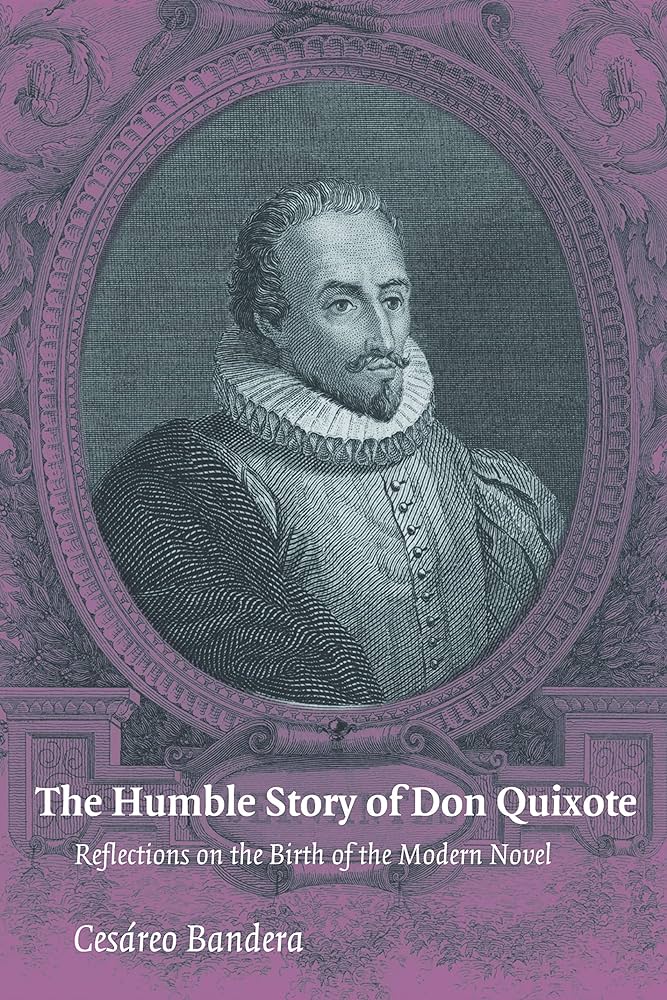
The Humble Story of Don Quixote: Reflections on the Birth of the Modern Novel
edited by by Cesáreo Bandera
The Humble Story of Don Quixote, written by a master of mimetic theory (Bandera), applies mimetic theory to better understand what is arguably the greatest novel ever written—or at least the first modern novel ever written. Don Quixote occupied such a high place in the great Russian author Fyodor Dostoevsky’s opinion that he said this of it:
Read more
“In the whole world there is no deeper, on mightier work. This is, so far, the last and greatest expression of human thought…And if the world were to come to an end, and people asked there, somewhere: “Did you understand your life on earth, and what conclusions have you drawn from it?”—man could silently hand over Don Quijote.”
The epitaph which opens Chapter 1 of this book.
Don quixote is the mimetic man par excellence. Everything he does is motivated by imitation, from his initial reading of novels of chivalry to the suggestions of his squire, Sancho Panza. This book is the best explanation of Don Quixote available, and it is thoroughly Girardian in nature.
Of particular interest in this book is chapter 10: The Desire of the Obstacle. The chapter concerns itself with the self-inflicted failure that one caught in the cycle of destructive mimetic desire is subjected to, much like Dostoevsky’s Underground Man.
About the Author
Cesáreo Bandera was Professor Emeritus of the University of North Carolina at Chapel Hill, former Director of the Program in Comparative Literature at SUNY at Buffalo, and former President of the Colloquium on Violence and Religion.
CONTACT INFO:
email@email.com
123.456.7890
LATEST BOOK
RENÉ GIRARD AND CREATIVE
RECONCILIATION
edited by Vern Neufeld Redekop and Thomas Ryba
The contribution of this book to the field of reconciliation is both theoretical and practical, recognizing that good theory guides effective
SITE MANAGEMENT
This site is run by a voluntary and cross-disciplinary coalition of scholars and
practitioners. Content Contributors,
Administrators, and Editors are wanted. Contact us: info (at)mimetictheory.com
DISCLAIMER
All rights are reserved to the Mimetic Theory Project 2020.
